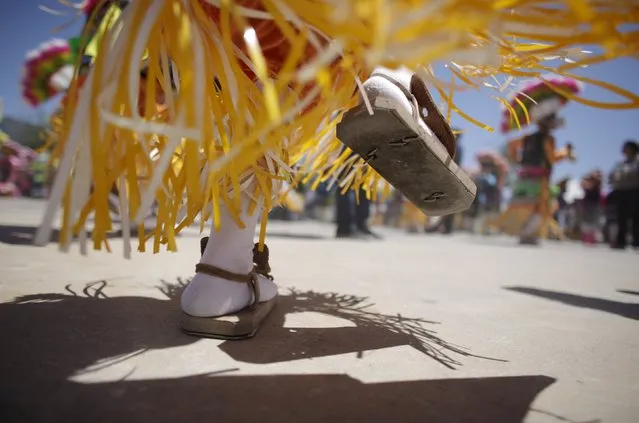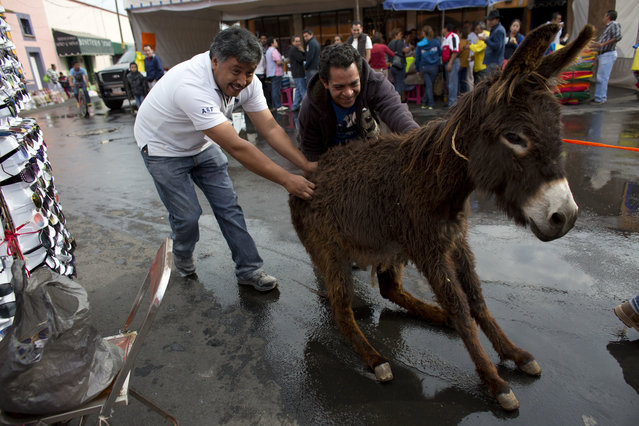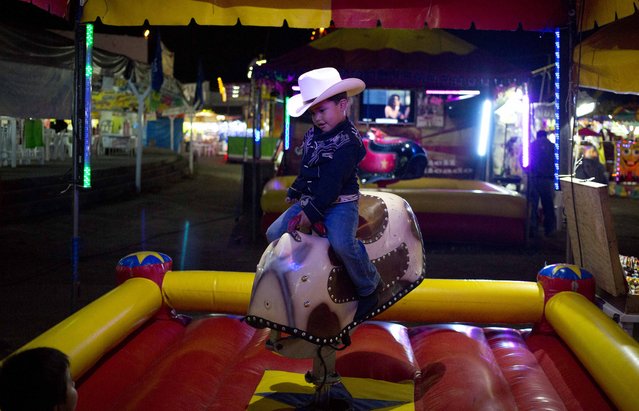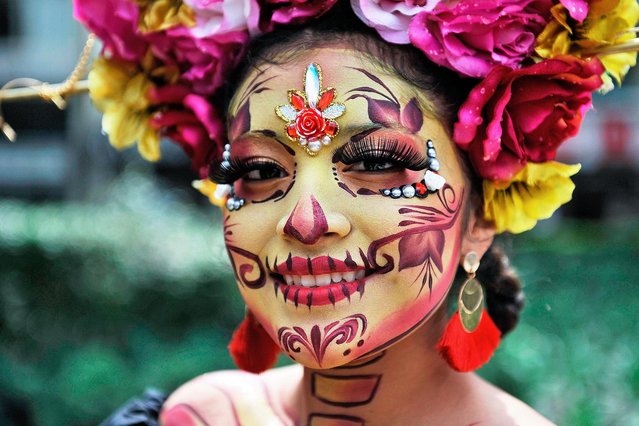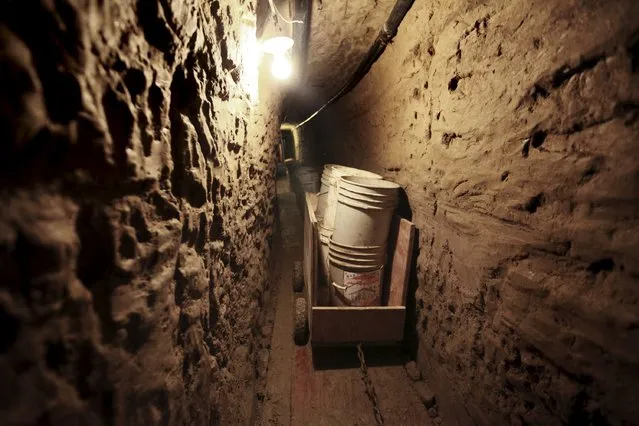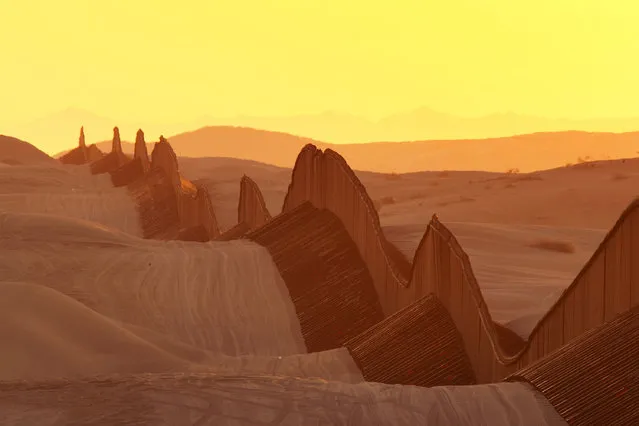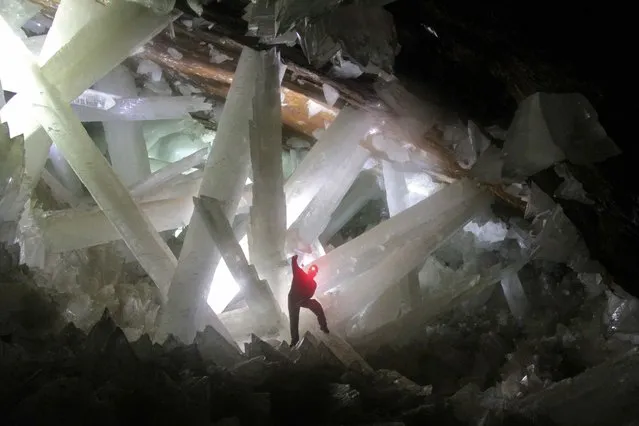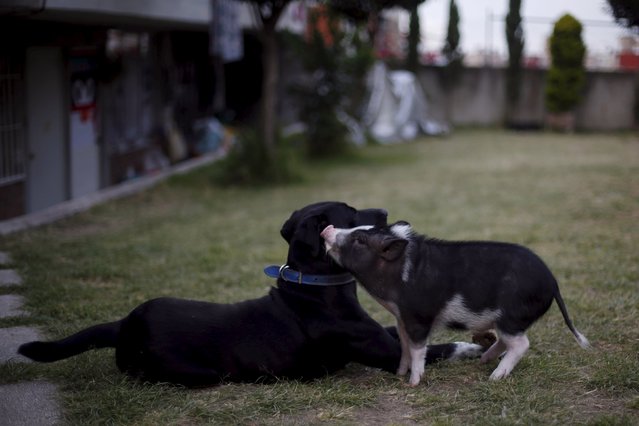
Goyo, an eight-month-old mini pig, plays with a dog in Mexico City, December 21, 2015. Mini pigs can grow to about 30 kg (66.1 lbs) in weight and about 35 cm (1.1 ft) in height, according to the company Mini Pigs Mexico. The company says that the mini pigs' popularity as pets is growing and around 300 are sold every year in Mexico, with prices ranging from $350 to $1,600. (Photo by Edgard Garrido/Reuters)
29 Dec 2015 08:03:00,post received
0 comments

